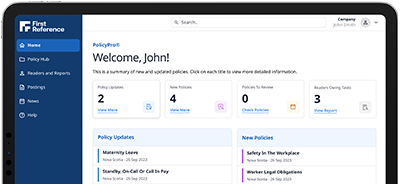It’s that time of year: Seasonal Affective Disorder hits some employees
Christina Catenacci, BA, LLB, LLM, PhD
‘Tis the season for us to put away the lawn furniture and take apart the garden. The sunlight hours are decreasing and the plants around the house are turning brown. We are now faced with leaves on the ground, colder, damper weather, and soon, Christmas commercials. As we take out our winter coats and snow shovels, it is important to remember that this is the time that Seasonal Affective Disorder (SAD) can hit employees. What can employers do?
It is important for employers to be aware and recognize that Seasonal Affective Disorder can cause employees to experience these main symptoms, as noted here and here:
- Increased appetite and cravings for sweet or starchy foods
- Weight gain
- Increased sleep and daytime sleepiness
- Less energy and ability to concentrate in the afternoon
- Loss of interest in work or other activities
- Slow, sluggish, lethargic movement
- Social withdrawal
- Unhappiness and irritability
- Feelings of despair
The causes have to do with factors such as amount of light, body temperature, genes and hormones.
Moreover, SAD is related to a person’s biological clock, which regulates the circadian rhythm. This “clock” responds to changes in season because of the differences in the length of the day, and tells the body to sleep as the days shorten. Since we usually live and work in conditions that don’t follow the seasons (e.g., 9-to-5 workdays), this response puts us out of step with our daily schedules.
Furthermore, research suggests that hormones and neurotransmitters, including serotonin and melatonin, chemical messengers in the brain that help regulate sleep, mood and appetite, may be disturbed in cases of SAD.
There is treatment, and the prognosis is good. Things that have been known to help the situation include:
- Being active with regular exercise, especially doing outdoor activities during the day
- Light therapy (phototherapy that involves using sunlamps that mimic outdoor light)
- Keeping curtains open during the day and sitting near windows
- Doing yoga
- Massage therapy
- Eating regular healthy meals and avoiding alcohol and illegal drugs
- If symptoms are more severe, medication and cognitive-behavioural therapy
Even without treatment, symptoms typically disappear in the spring.
Like major depressive disorder, SAD is a mental illness and might fall in the category of disability under human rights legislation. Employers are recommended to be supportive of employee who experience SAD, as they have a duty to accommodate such employees to the point of undue hardship.
Accommodation could involve providing increased flexibility in work hours or break times, or something more substantial such as a leave of absence or temporary job restructuring, retraining or assignment to an alternative position. It really depends on the circumstances.
More specifically, an employer could allow an employee suffering from SAD to take a longer daytime break than usual to walk around the block in the sunlight. Another solution might be to allow the employee to take more frequent eating breaks. Alternatively, the employee could be allowed to move to a workstation closer to a window. Another option could involve letting the employee work around an important cognitive-behavioural therapy or massage therapy appointment.
Many accommodations can be made easily, and at minimal cost. However, it is important for employers to explore the options with the employee in their efforts to meet their duty to accommodate.
The Ontario Human Rights Commission suggests the following when accommodating an employee on the ground of disability:
- Accept requests for accommodation from employees in good faith
- Request only information that is required to provide the accommodation
- Take an active role in examining accommodation solutions that meet individual needs
- Deal with accommodation requests as quickly as possible, even if it means creating a temporary solution while a long-term one is developed
- Maximize confidentiality for the person seeking accommodation and be respectful of his or her dignity
- Cover the costs of accommodations, including any necessary medical or other expert opinion or documentation
Disability is a complicated topic and it is important for employers to understand various illnesses they may confront in the workplace so they can fulfil their responsibilities under the applicable human rights legislation.
Christina Catenacci
First Reference Human Resources and Compliance Editor
Table of Contents
Compliance Made Easy®


